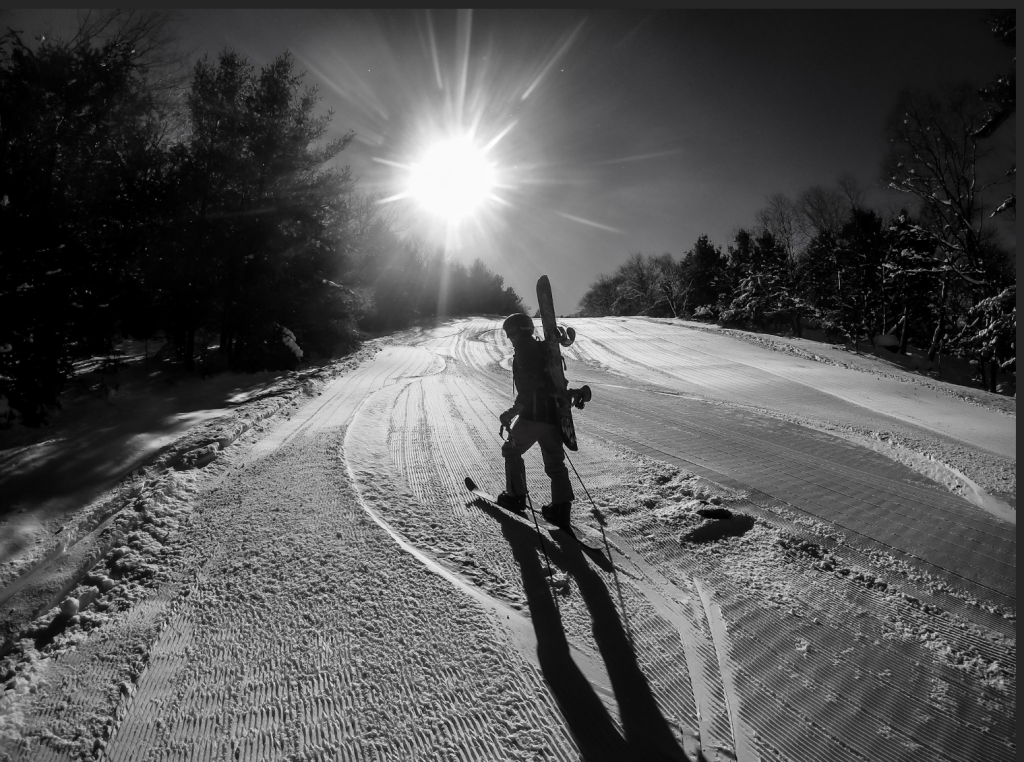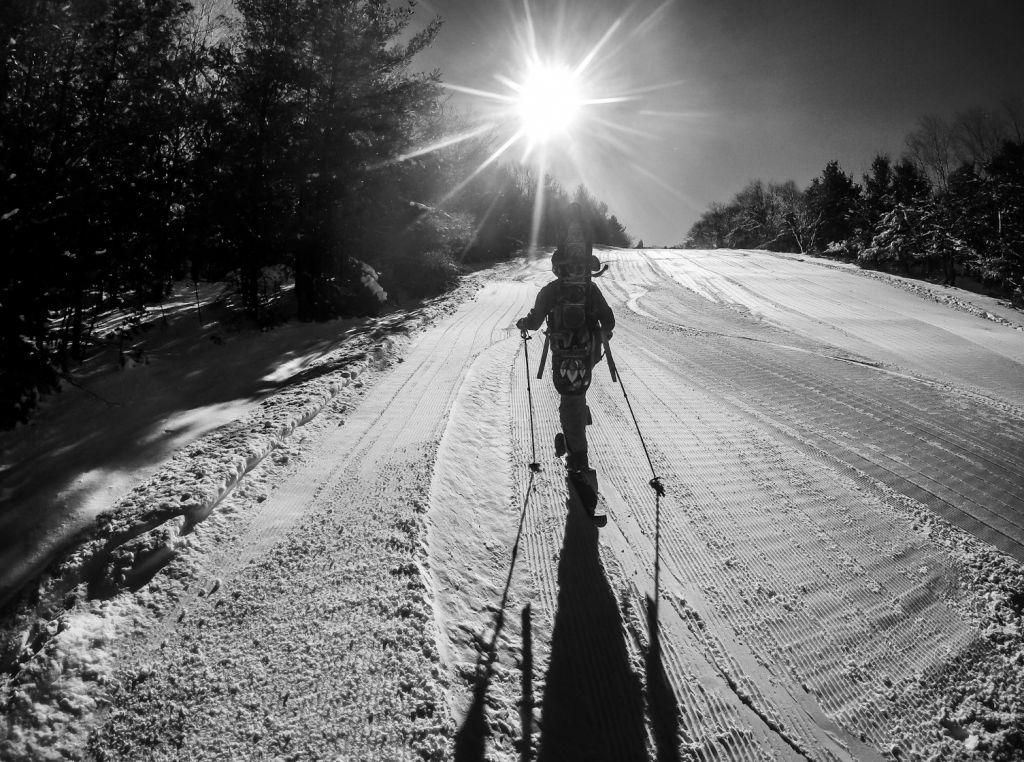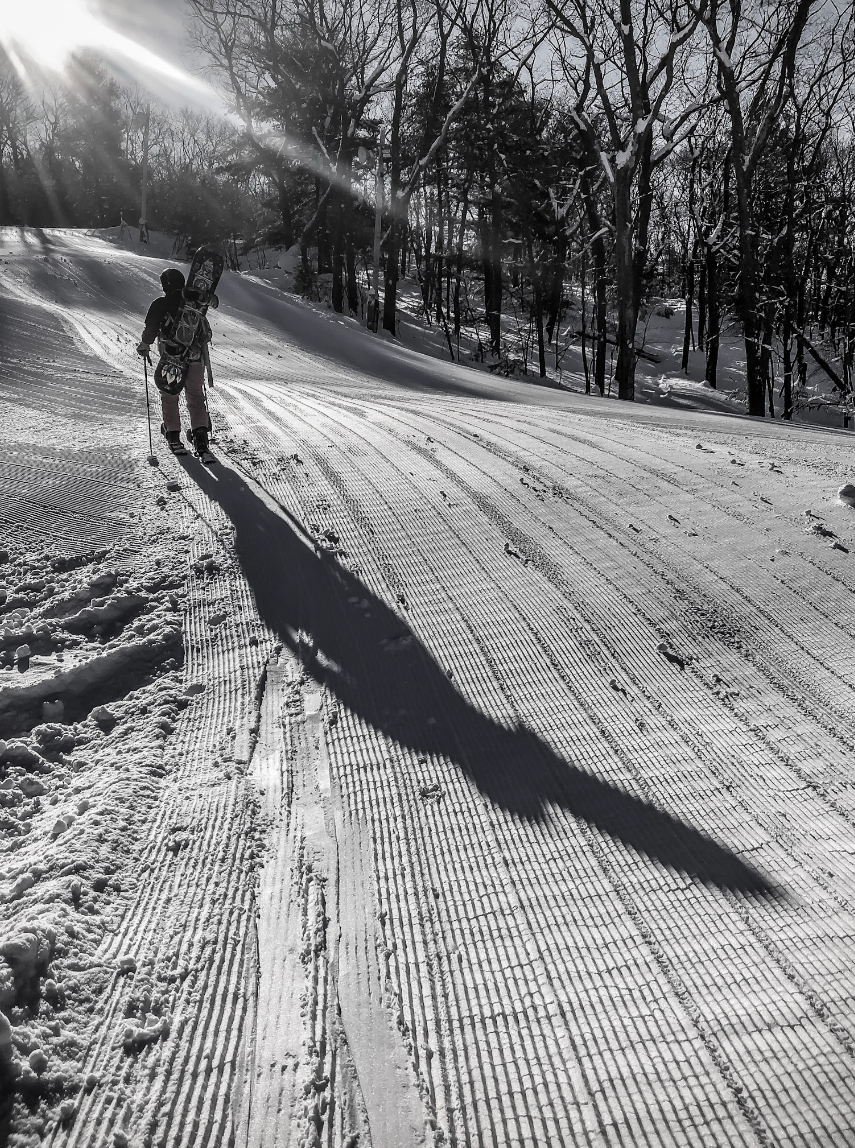What is an approach ski? Sometimes called ski shoes, approach skis are a unique, albeit niche, piece of gear that blends the best attributes of snowshoes, cross-country skis, and backcountry skis—combining the float and simplicity of snowshoes, the glide and efficiency of cross-country skis, and the aesthetics of backcountry skis.
If you’ve never heard of approach skis before or always wondered what those short, funny-looking skis gracing the wall of your local shop were, I’m going to tell you why you’ll want to add a set of ski shoes to your gear collection.

Uses for Approach Skis
I was first introduced to ski shoes as an alternative to snowshoes for accessing backcountry snowboard lines in the early days of splitboards—before they became readily available and their performance reliable. Approach skis offered a more efficient method of travel and allowed me to follow—without wrecking—the skin track of my partners on backcountry skis. Of course, approach skis do present one notable issue: you have to descend with a pair of awkward skis attached to your pack.
If ski shoes were good for accessing backcountry ski lines, they were great for getting to out-of-the-way ice climbs. This is especially true for climbs featuring long, mellow approaches, like the Auburn Ice Canyon. Here the compatibility of approach skis with a wide array of footwear (including mountaineering boots), their glide, and the lack of descending made them a nice upgrade over simply hoofing it into the ice.
While I initially imagined ski shoes as a tool in my backcountry snowboarding and ice climbing quivers, I quickly found that they offered fun all on their own. On golf courses, rolling trails, and unexplored woods covered with fresh soft snow, they’re infinitely more fun and faster than snowshoes and don’t require the specialized equipment or refined technique of cross-country skis. Ultimately, they allow you to glide across the terrain, make spirited (and at times loosely controlled) descents, and are sure to put a smile on your face.

What to Look for in an Approach Skis
Because the market for approach skis is small, it’s also turbulent. One day you’ll find them featured on the front page of a company’s website and the next they’ve disappeared from the site altogether. In recent years, major manufacturers like Black Diamond and Salomon have produced approach skis while specialty companies have focused solely on this niche for over a decade. The idea of approach skis keeps bubbling up—just last year, Union Bindings introduced skis shoes targeted specifically for backcountry snowboarders.
While every brand’s ski shoe is unique, there are some general attributes to consider when selecting a set. These include:
Length
Short approach skis are coveted by snowboarders—after all, they have to fit on a pack. The approach skis offered by Union Bindings range in size from 85 cm to 100 cm. That said, users wanting them as a substitute for snowshoes or cross-country skis will likely want to look at skis ranging from 120 cm to 140 cm. The longer length provides more glide and more control when descending slopes.
Width
The girth of a ski shoe will also affect its performance. The wider a ski is, the more float (ability to keep you from sinking in the snow) it’ll provide. In most cases, an approach ski will not offer as much float as a snowshoe, however, they offer a superior amount of float when compared to cross-country skis.
Skins
While cross-country skis use scales to provide traction—a pattern on the bottom of the ski that slides in one direction and grips in the other—most approach skis use a built-in skin similar to what is used by backcountry skiers. Skins are strips of fabric that, like scales, glide forward and prevent sliding backward.
Edges
Some approach skis have metal edges. Metal edges are a good feature to look for in a ski shoe, particularly if you’re on the East Coast. Metal edges increase stability and control in variable conditions, something we see a lot of on the ice coast.
Bindings
Most ski shoes come with a universal binding that works with just about any type of footwear. However, some skis come unmounted, allowing you to choose whatever binding works best for you. People who use approach skis opt for everything from 75 mm telemark to 3-pin to NNN BC bindings.

A Favored Approach
Approach skis have become a staple of my winter kit and while I don’t use them as much for snowboarding these days, I still enjoy gliding into my local ice crag and exploring in my local woods.
Luke Foley
Luke Foley is passionate about discovering and sharing hidden local treasures and has long been a New England adventure enthusiast. After all, there are only a few places where you can skin for fresh tracks in the morning and have a sunset surf session on the same day.




